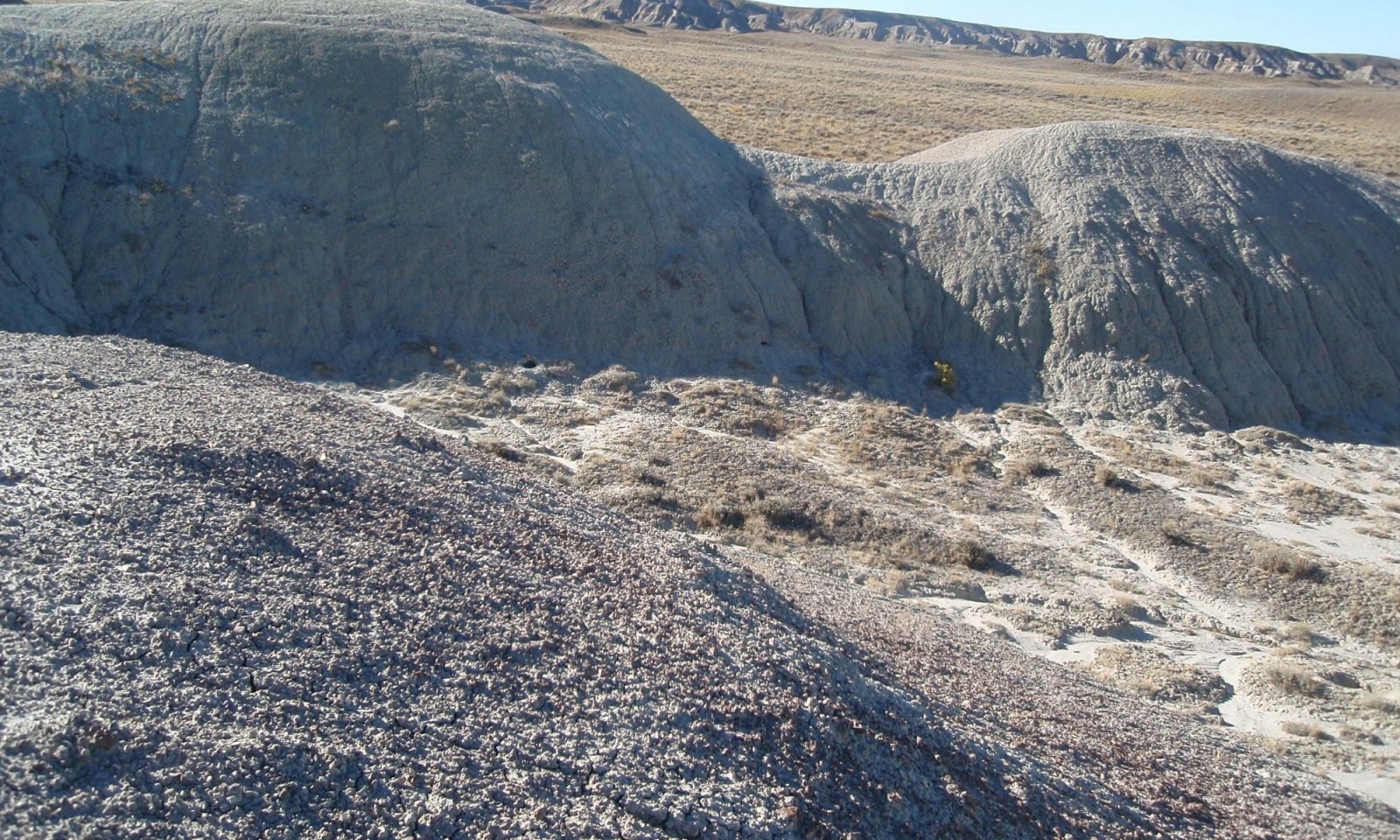
Shale Pinedale Plateau (Sh PP)
Scenario model
Current ecosystem state
Select a state
Management practices/drivers
Select a transition or restoration pathway
-
Transition T1A
Extreme soil disturbance or catastrophic drought
More details -
No transition or restoration pathway between the selected states has been described
Target ecosystem state
Select a state
Description
The Reference State consists of one plant community, the Gardner's Saltbush/Rhizomatous Wheatgrass community. The dominant shrub species is Gardner's Saltbush and dominant grass is thickspike wheatgrass with bunchgrasses such as Indian ricegrass and bottlebrush squirreltail subdominant.
Characteristics and indicators
This site is characterized by sparse vegetation cover, low production, and shallow to shale bedrock soils. Recognition of bedrock can be difficult as this is often shale weathering in place and can look like soil particles.
Reference conditions will persist in the absence of soil disturbing activity such as: high intensity hoof action, anthropogenic activity, or rodent activity. Because of high runoff resulting in low effective precipitation on the site, it is vulnerable to bunchgrass die-off events during extreme drought conditions.
Resilience management
This site has moderate resilience due to its aridic ustic (ustic bordering on aridic) soil moisture regime and frigid bordering on cryic temperature regime (Chambers et.al. 2014). Precipitation is typically low, and runoff potential high due to heavy soil surface textures resulting in slow permeability. The site is very slow to recover after disturbance, and is susceptible to delays in recovery during extreme climatic events such as drought.
The site has moderately high resistance to invasion by annual grasses because of climate limitations (dry and cold) and heavy soil surface textures.
Submodel
Description
The Eroded State is a result of soil-disturbing activities outside of the normal disturbance regime expected for this site. Examples are high intensity hoof action, anthropogenic activity, rodent activity, or accelerated sheet and rill erosion caused by catastrophic drought followed by high precipitation events.
Characteristics and indicators
There is a shift towards mat-forming and annual forbs, and sheet and rill erosion is apparent. Bare ground will increase to levels exceeding 60 percent, and perennial plant cover and composition will decrease.
Resilience management
Site resilience is lower than the Reference State. Once accelerated soil erosion occurs, the site has limited potential to recover after disturbance. Annual weedy forbs such as halogeton are more likely to invade after ground disturbing activities.
Submodel
Mechanism
Soil-disturbance outside of the normal disturbance regime expected for this site. Examples include high intensity hoof action, anthropogenic activity (e.g. mechanical disturbance), or rodent activity. Catastrophic drought may be a trigger for this transition.
Constraints to recovery
Soil erosion and subsequent hydrologic changes, persistent drought conditions, and herbivory pressure are constraints to recovery to the Reference State.
Context dependence
Warmer and drier climate trends contribute to uncertainty of restoration efforts. Steeper slopes will have more soil erosion and less likelihood of restoration once degraded. Soil surface chemistry changes (increases in salinity) with exposure of bedrock further reduce chances of restoration.
Model keys
Briefcase
Add ecological sites and Major Land Resource Areas to your briefcase by clicking on the briefcase (![]() ) icon wherever it occurs. Drag and drop items to reorder. Cookies are used to store briefcase items between browsing sessions. Because of this, the number of items that can be added to your briefcase is limited, and briefcase items added on one device and browser cannot be accessed from another device or browser. Users who do not wish to place cookies on their devices should not use the briefcase tool. Briefcase cookies serve no other purpose than described here and are deleted whenever browsing history is cleared.
) icon wherever it occurs. Drag and drop items to reorder. Cookies are used to store briefcase items between browsing sessions. Because of this, the number of items that can be added to your briefcase is limited, and briefcase items added on one device and browser cannot be accessed from another device or browser. Users who do not wish to place cookies on their devices should not use the briefcase tool. Briefcase cookies serve no other purpose than described here and are deleted whenever browsing history is cleared.
Ecological sites
Major Land Resource Areas
The Ecosystem Dynamics Interpretive Tool is an information system framework developed by the USDA-ARS Jornada Experimental Range, USDA Natural Resources Conservation Service, and New Mexico State University.
